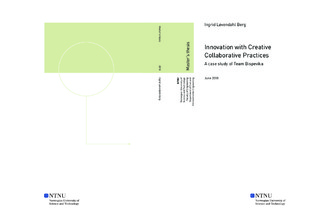| dc.description.abstract | Today, construction projects are increasing in complexity as a result of higher demands for quality in production and material choice, tougher competition in the market and increased use of digital tools. These factors are increasing the need for higher quality and competence in achieving project success. Changing the approach towards development of new and innovative solutions should play a key role to achieve competitive advantage in future projects.
The team of the construction project Bispevika in Oslo, Norway is working on how creative collaborative practices can be performed in problem-solving processes, in order to develop improved, innovative solutions. This study considers following research questions through a case study of Team Bispevika: Which creative collaborative practices are implemented in Bispevika? What are the experiences of these practices? How to improve these practices in future projects? In addition to observations on site within design and procurement, interviews of project managers as well as a document study based on received project material is carried out to answer the research questions. A literature study on interaction, trust in collaboration, creativity, creative processes and creativity and innovation in lean is also presented.
The engagement of an innovation manager as a facilitator combined with his own research on creative practices contributes to the overall vision of being an innovative project. The executed method is based on a three-phased process leading to the choice of best solution to a given issue. By using a strategy of creating winning teams and focusing on trust in these collaborations, the project is aiming at innovating the way projects are managed in the future.
Identified creative collaborative practices with experiences and possible improvements are presented. Among successful practices are co-location of stakeholders, use of digital aids, ICE-meetings, discipline strategies and constraint-shattering practices, in addition to the development of Key Performance Indicators. | |

